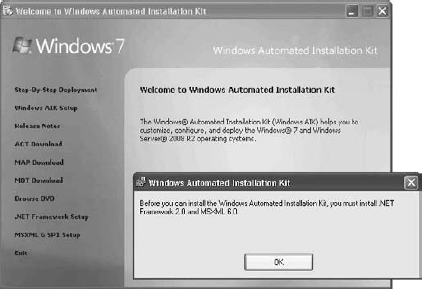2. Setting Up the Source Computer
If you plan on running LoadState on a computer,
you'll need to copy several files onto the computer first. The source
computer can be running Windows XP, Windows Vista, or even Windows 7.
Since the most common migration scenario will be migrating from Windows
XP to Windows 7, it's important to know how to prepare the Windows XP
computer to run LoadState.
The easiest way to do this is to simply copy the
appropriate folder. If you install the WAIK on a technician's computer,
it will include the following two folders:
The ...\x86 folder includes all the USMT files needed for a 32-bit source computer, and the ...\amd64
folder includes all the files needed for a 64-bit source computer. You
can simply copy the contents of these folders to a root folder on the C:
drive such as C:\USMT. You need to ensure that the folders within these folders are also included.
As a reminder, it is available as a
free download from Microsoft's download site (www.microsoft.com/downloads/) by entering WAIK in the Search All Download Center text box. The Windows AIK for Windows 7 download (KB3AIK_EN.iso)
file should be listed on the first page. Windows XP may not have the
.NET Framework 2.0 and MSXML 6.0 installed on it already, so you may see
an error similar to Figure 2 if you try to install the WAIK. However, the WAIK includes these tools.

In Figure 2,
you can see links for the .NET Framework Setup and the MSXML 6 SP1
Setup. If you get the error message, install these two components and
then restart the installation. It's also possible to automate the
deployment of the WAIK using one of many methods, such as assigning it
computers using Group Policy or deploying it with System Center
Configuration Manager (SCCM).
After you have copied the appropriate files or
installed the WAIK on the Windows XP system you plan to use as the
source computer, you can use the steps detailed in the following
sections to begin running ScanState.